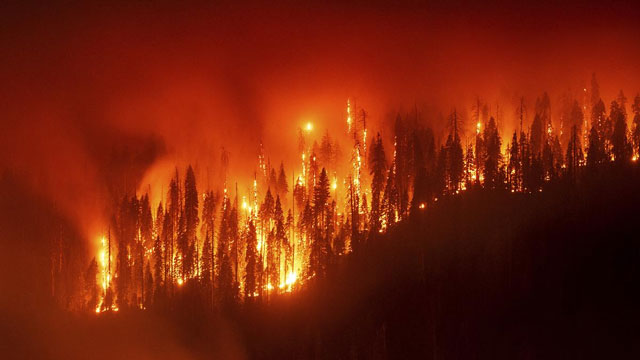Daijiworld Media Network – New Delhi
New Delhi, Oct 20: Around 15 million people in India were affected by wildfires in 2024–25, with Uttar Pradesh emerging as the worst-hit region, according to a new global study published in the journal Earth System Science Data.
Researchers noted that Uttar Pradesh experienced its most severe wildfire season on record, driven by a combination of crop burning, intense heatwaves, and dry fuel accumulation. The fires contributed to severe haze episodes in New Delhi in November 2024, when PM2.5 levels soared to over 200 micrograms per cubic metre — 13 times higher than the World Health Organization’s daily standard.

The annual State of Wildfires report, led by scientists from the University of East Anglia and the UK Met Office, estimated that a total of 3.7 million square kilometres — an area larger than India — burned globally during 2024–25, releasing over eight billion tonnes of carbon dioxide. This marked a 10% increase in emissions compared to the long-term average since 2003.
Globally, approximately 100 million people and assets worth USD 215 billion were exposed to wildfire risks. India and the Democratic Republic of the Congo recorded the highest population exposure, with about 15 million affected in each country. Nigeria, China, Mozambique, and South Sudan followed, each reporting over five million affected individuals.
Within India, Uttar Pradesh accounted for the largest number of people affected (over 4.6 million), followed by Punjab with around 3.5 million. India also ranked first globally in terms of infrastructure exposure, with USD 44 billion worth of homes and assets at risk — higher than the US (USD 26 billion) and China (USD 17 billion).
“Our annual reports are building unequivocal evidence of how climate change is increasing the frequency and severity of extreme wildfires,” said Douglas Kelley, land surface modeller at the UK Centre for Ecology and Hydrology and one of the lead authors. “Without human-driven warming, many of these wildfires, in Pantanal and Southern California, for example, would not have been on an extreme scale,” he added.
The researchers warned that rising temperatures, severe droughts, and human activities are making wildfires more frequent and destructive, posing growing threats to lives, livelihoods, and ecosystems worldwide.